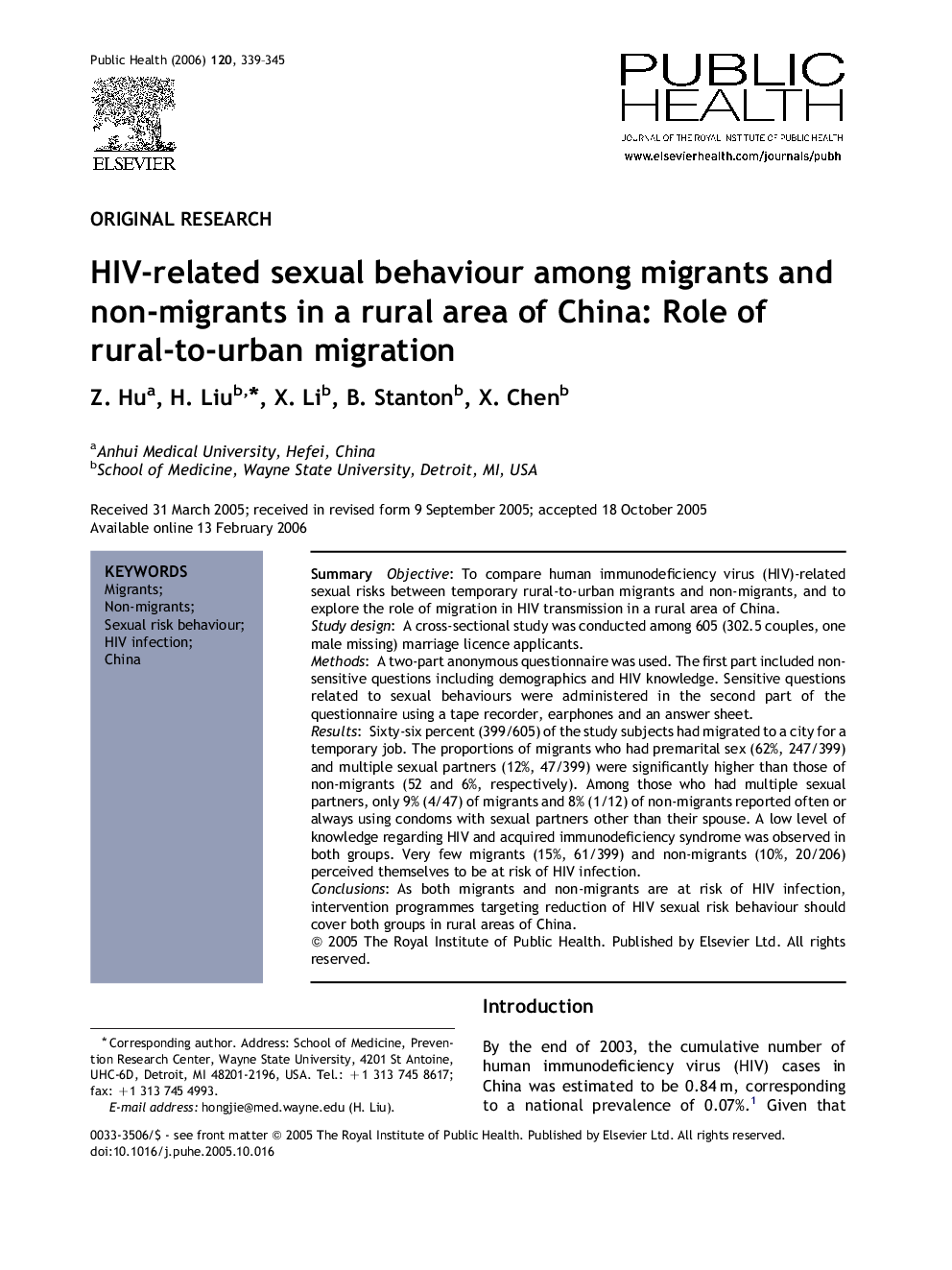| Article ID | Journal | Published Year | Pages | File Type |
|---|---|---|---|---|
| 1089185 | Public Health | 2006 | 7 Pages |
SummaryObjectiveTo compare human immunodeficiency virus (HIV)-related sexual risks between temporary rural-to-urban migrants and non-migrants, and to explore the role of migration in HIV transmission in a rural area of China.Study designA cross-sectional study was conducted among 605 (302.5 couples, one male missing) marriage licence applicants.MethodsA two-part anonymous questionnaire was used. The first part included non-sensitive questions including demographics and HIV knowledge. Sensitive questions related to sexual behaviours were administered in the second part of the questionnaire using a tape recorder, earphones and an answer sheet.ResultsSixty-six percent (399/605) of the study subjects had migrated to a city for a temporary job. The proportions of migrants who had premarital sex (62%, 247/399) and multiple sexual partners (12%, 47/399) were significantly higher than those of non-migrants (52 and 6%, respectively). Among those who had multiple sexual partners, only 9% (4/47) of migrants and 8% (1/12) of non-migrants reported often or always using condoms with sexual partners other than their spouse. A low level of knowledge regarding HIV and acquired immunodeficiency syndrome was observed in both groups. Very few migrants (15%, 61/399) and non-migrants (10%, 20/206) perceived themselves to be at risk of HIV infection.ConclusionsAs both migrants and non-migrants are at risk of HIV infection, intervention programmes targeting reduction of HIV sexual risk behaviour should cover both groups in rural areas of China.
